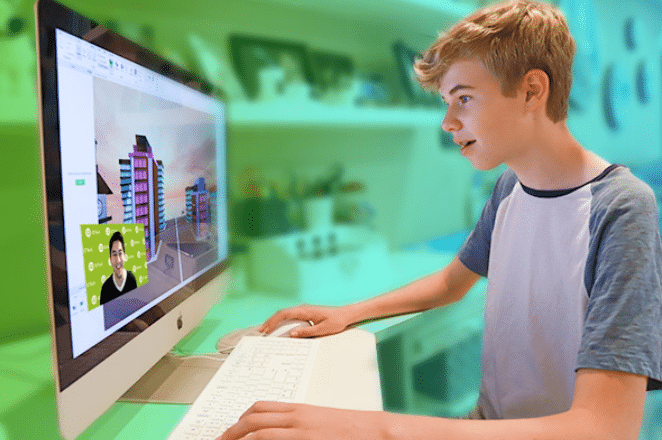The Attract of EdTech Instruments
The promise of implementing edTech instruments in training is alluring. Instructional applied sciences assist in the classroom and past as further avenues to follow core abilities, personalize studying primarily based on potential, add extra enjoyable, and allow higher collaboration amongst college students and academics. In brief, they could be a precious help to enhance studying outcomes and maintain college students engaged.
Nevertheless, regardless of the huge potential of edTech instruments, they will inadvertently create conditions the place pupil studying will get negatively impacted. Right here are some things to recollect when utilizing edTech expertise in your classroom to reap probably the most profit.

Scale back Pointless Use of Media
It may be tempting to make use of totally different types of media when educating an idea. Nevertheless, when a number of types of media are used concurrently, they will trigger distraction and make it more durable to retain info.
In a single experiment, researchers confirmed two teams of volunteers a presentation in regards to the nation Mali. One group was proven a text-only model of the presentation, whereas the opposite noticed a multimedia model that included each textual content and audio-visual content material.
After the presentation, the text-only group may reply extra questions appropriately on a follow-up quiz in comparison with the multimedia group. Researchers summarized the end result as follows, “The text-only readers discovered it to be extra attention-grabbing, extra instructional, extra comprehensible, and extra pleasant than did the multimedia viewers, and the multimedia viewers had been more likely to agree with the assertion ‘I didn’t be taught something from this presentation than had been the text-only readers.”
This doesn’t imply that academics ought to cease utilizing multimedia. Completely different types of media might be participating and enjoyable for the classroom so long as they don’t trigger cognitive overload when used concurrently.
Standard Tales Proper now Seven Methods for Constructing Constructive School rooms Interactivity Features Steam for Youngest College students Redefining Enjoyable for Younger Readers
Restrict Use of Gamified Components in EdTech Instruments
Many edTech merchandise use gaming parts like badges, factors, and extra to maintain college students engaged with the product. Whereas these mechanisms can interact college students within the brief time period, they cut back college students’ intrinsic motivation in the long run. The preliminary engagement is now believed to be because of the novelty of participating with a brand new product, and when this novelty wears off, so does the curiosity within the topic. When gaming parts are used over a very long time, college students not take pleasure in studying for studying’s sake.
In a single semester-long research, researchers divided college students into two teams – a gamified group that used a reward system aligned with the training targets and a management group that acquired the identical instruction with none gamified parts. On the finish of the semester examination, the non-gamified group not solely did higher but additionally reported greater ranges of motivation and satisfaction on the finish of the category! The researchers clarify, “The outcomes counsel that at greatest, our mixture of leaderboards, badges, and competitors mechanics don’t enhance instructional outcomes and at worst can hurt motivation, satisfaction, and empowerment. Additional, reducing intrinsic motivation can have an effect on college students’ remaining examination scores.”
That stated, gamified mechanisms might be helpful in just a few situations. It’s nonetheless a good suggestion, nevertheless, to restrict them to brief intervals of time. They’re useful when working with lower-order abilities, like memorizing information and spellings, or bettering velocity, like psychological math and typing. To advertise higher-order pondering abilities, like inventive and demanding pondering, utilizing gamified parts is sort of at all times a foul thought.
Use Collaborative EdTech Instruments
By default, classroom environments have a tendency to advertise pupil competitors, lowering intrinsic motivation. Utilizing expertise instruments to advertise collaboration might help stability this out. Even easy social cues that sign working collectively have been discovered to reinforce intrinsic motivation.
These collaboration instruments don’t must be very subtle so long as they permit a real approach to collaborate. One of many issues we found by distant studying through the pandemic was that collaboratively enhancing a shared doc led to higher studying for the entire group. College students who had been shy in group conversations may provide extra concepts by merely enhancing the doc, and extra concepts get integrated into the ultimate answer.
Dialogue boards are one other (easy) and great tool for constructing essential pondering in college students. They supply an asynchronous alternative for college kids to consider the query, do analysis and mirror upon their thought earlier than sharing it with others. In addition they be taught by their friends – studying by different responses expands their very own perspective.
Reflecting on Outcomes
Whereas edTech instruments have the potential to enhance studying outcomes, not all of them may be appropriate. As well as, how and when they’re used within the classroom additionally makes a distinction. Inappropriate or overuse of expertise can hurt studying outcomes. Educators ought to take note of cognitive overload, intrinsic motivation, and collaboration when incorporating edTech instruments of their lecture rooms.
